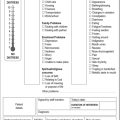18 Introduction to consolidating learning
An easy to use model of reflection
In Section 1, you were introduced to the Driscoll (2007) model of reflection (see appendix 1) which we use in this chapter to reflect on a variety of experiences from your practice placement.
First, refresh your knowledge on the Driscoll model:
Read the article by Burzotta and Noble (2011) (see References).
You may prefer to use a model of reflection you are familiar with or has been identified by your training school to do these exercises. Getting practice to use a specific model will help you gain the confidence to continue to use it throughout your future practice. Another way of reflecting on practice is to write freely about a situation. This is called a ‘narrative approach’ and is explored further in the work of Bolton (2010) (see References).
Linking experiences and learning: learning to learn
This also gives you the chance to reflect on how you learn and what process works well for you to ensure you take positive strategies into your future practice. You are encouraged to refer back to Sections 1 and 2 to find answers to questions and to think using a problem-solving approach.
Bolton G. Reflective practice: writing and professional development, 3rd ed. London: Sage; 2010.
Burzotta L., Noble H. The dimensions of interprofessional practice. British Journal of Nursing. 2011;20(5):310–315.
Driscoll J. Practising clinical supervision, 2nd ed. Edinburgh: Baillière Tindall; 2007.


